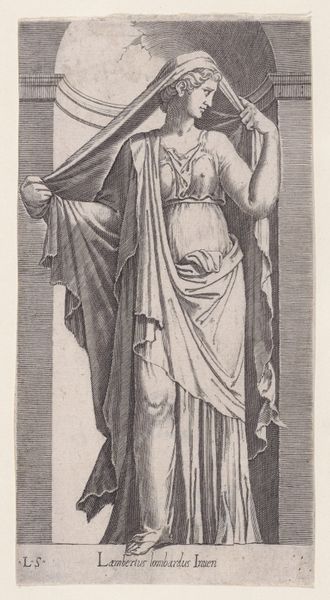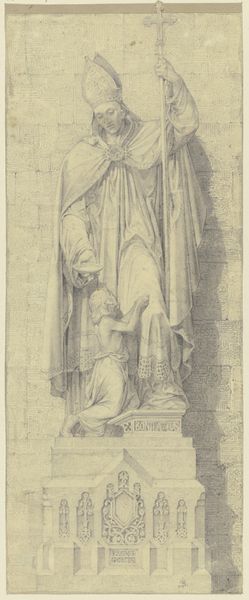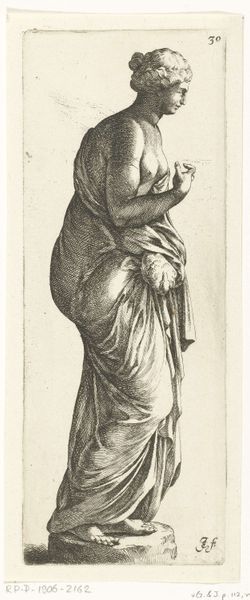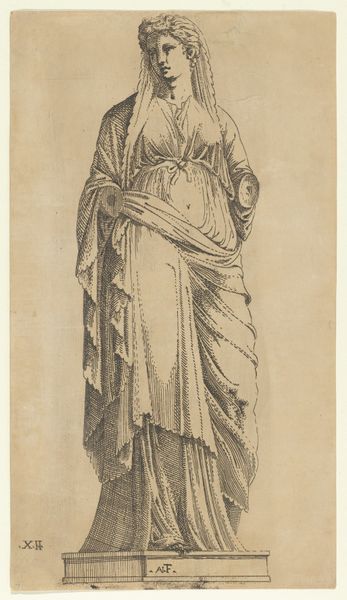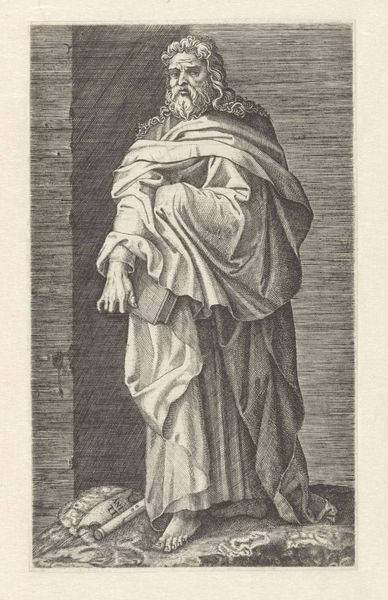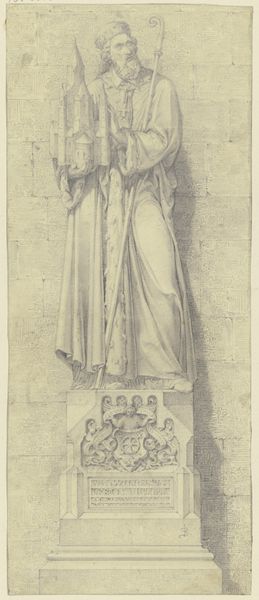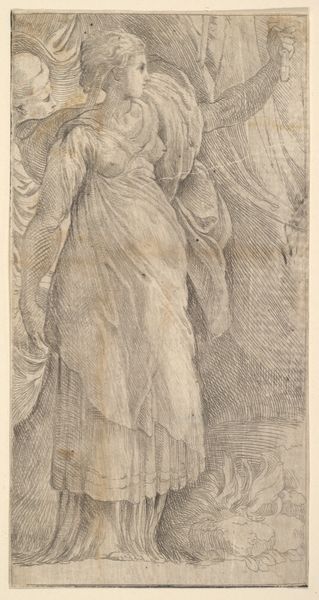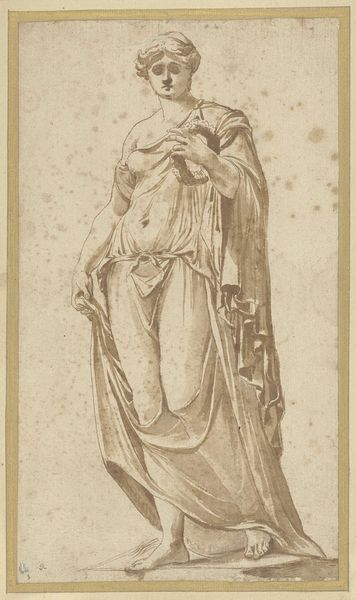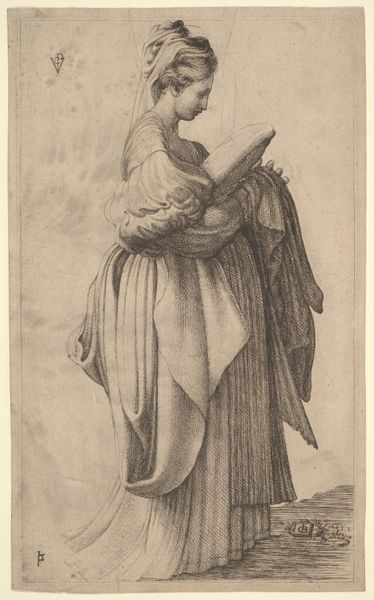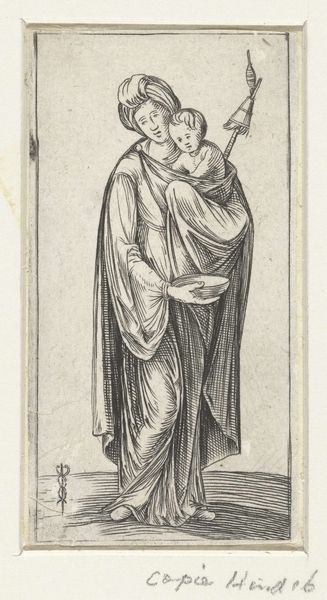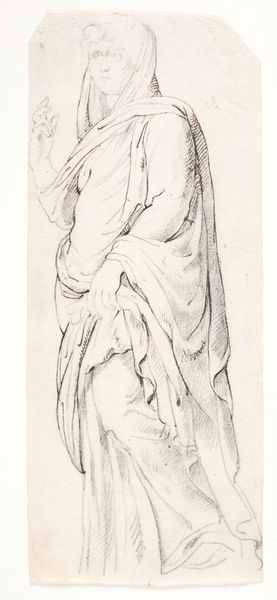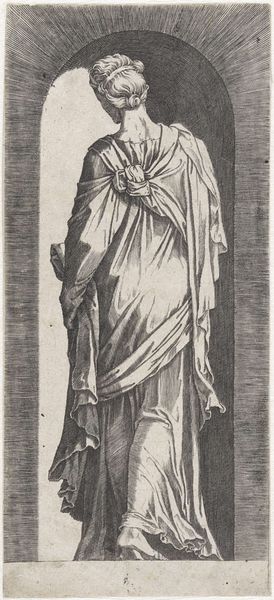
engraving
#
baroque
#
figuration
#
form
#
classicism
#
line
#
portrait drawing
#
history-painting
#
engraving
Dimensions: height 210 mm, width 88 mm
Copyright: Rijks Museum: Open Domain
Curator: Looking at this intriguing engraving, it's titled "Beeld van een vrouw zonder armen" or "Statue of a Woman without Arms", created by Jan de Bisschop after 1663, and housed here at the Rijksmuseum. Editor: My initial impression is one of restrained melancholy. The missing arms contribute to this feeling. Her face seems calm but wistful, almost ethereal given the starkness of the line engraving. Curator: It’s a rather curious image to disseminate! Why reproduce what some would consider broken in a high-status form of print? It appears to be inspired by classical sculptures, likely from the Hellenistic period which were experiencing a revival of sorts in that century, known for portraying idealized human forms but also marred, excavated from ruins, bearing marks of time and loss. Editor: Exactly, that imperfection. The image clearly channels Aphrodite, a common theme during this time, or perhaps a personification of Victory. Notice how the drapery clings, yet cascades. This contrast captures beauty but acknowledges a form of decay, something poignant given the symbols often associated with these figures. Is there more here than the obvious? Curator: De Bisschop’s meticulous details would seem to hint at a deeper study. He would have known that printmaking itself at this time served to elevate social class. The figure represented has an incredible pedigree, to put it another way! If Bisschop is drawing ancient sculptural fragments he must be invested in notions of classism, a view into societal ideas on class, beauty, and taste. And a clear example of how social institutions shape perceptions. Editor: And even without the presence of colour, the play of shadow conveys great dimension. There’s a tangible feeling of marble or stone beneath the cloak, bringing that past life forward through ink and paper. Her face shows what has staying power. Curator: Very interesting take on the power of memory when viewing her. Overall, Bisschop’s rendering gives the figure a continuing voice and shows how, even without limbs, classical figures can take new stances. Editor: Indeed. Despite its quietness, the image resonates profoundly. The missing arms become a part of her story, not a detraction.
Comments
No comments
Be the first to comment and join the conversation on the ultimate creative platform.
